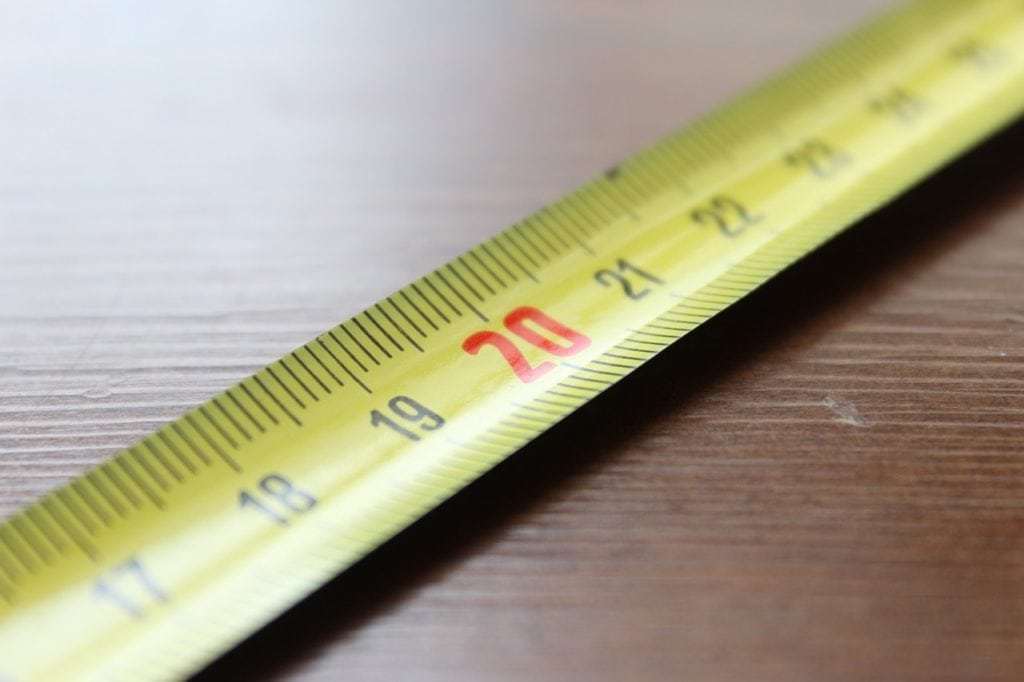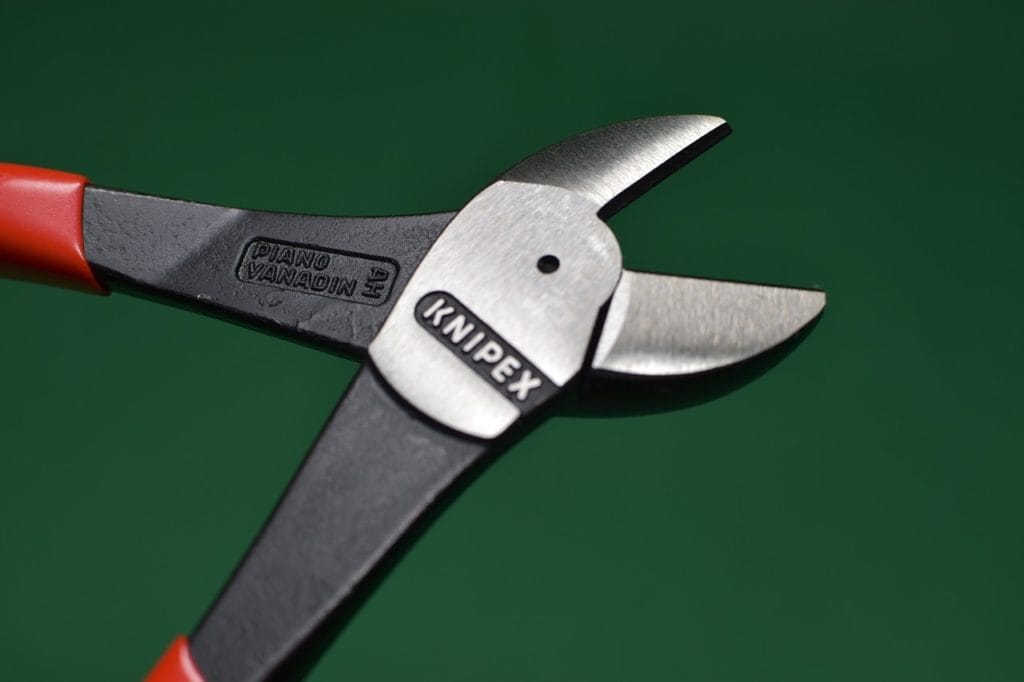How to Cut a Chain Link Fence – 6 Easy Steps
-
Pete Ortiz
- Last updated:

There are many reasons you may need to cut a chain length fence. The most common purpose will be to install it. Unless the chain link fence happens to come in the exact right size, you will need to trim it down to fit the area you’re fencing.
Other times, you may need to remove the chain link fence, which sometimes requires cutting of some sort.
Cutting a chain length fence may sound complicated, but it is straightforward once you know how to do it. Chain link fences are some of the easiest to work with, and their ability to be cut easily is one reason why.
We’ll go over many different ways you can cut or otherwise shorten a chain link fence in this article.
1. Measure and Measure Again

Once you cut a chain length fence, you can’t uncut it. For this reason, we highly recommend measuring and then measuring again before you make any irreversible changes. One of the best things regarding chain link fences is that you don’t have to correctly line them up. Instead, they are pretty forgiving when it comes to exact measurements.
However, you still don’t want to be off when you cut. Otherwise, you’ll have to get a completely new length of fence altogether since there is no easy way to repair a chain link fence that has been cut.
2. Set Up a Tension Bar
Before you attempt to make any cuts, you need to ensure that the correct amount of tension is applied to the fence. As you might imagine, the fence will stretch once it is completely tense. If you cut before the fence has been stretched, then you will end up making it in the wrong place.
A tension bar should be installed before making any cuts. This ensures that your cuts are accurate and straight.
Alternatively, you can stretch it out, mark where you need to cut it at, and then remove the tension bar to do the actual cuts.
3. Unweave Where Possible

Before you start cutting away, you should consider unweaving the fence when possible. To accomplish this, use a pair of lineman’s pliers and unweave the chain link fence sections. This is a pretty straightforward process, but it can be time-consuming.
With that said, unweaving instead of cutting leaves the other side of the fence useable in case you ever need to use it. Furthermore, cutting into a length of fence is more complicated than just cutting the end off. You don’t want to have too much hanging off the end that can vibrate and move around while you’re cutting, or you may find yourself making mistakes.
You should unweave the fence to about the length you need it. Continue to unweave up and down the piece until the section breaks free. Once you’re done, you can move on to the actual cutting step if you need to. Of course, this step is only applicable if you have a large piece of fence you’re trying to cut in half or take multiple feet off of. If you are cutting a hole in a fence, you can skip this step.
4. Use Bolt Cutters

If unraveling the fence isn’t enough, you can use a pair of bolt cutters as well. There are a variety of tools you can use to cut through a chain link fence. However, bolt cutters are one of the cheapest and easiest to use. Most DIYers can easily get their hands on a pair.
Preferably, the bolt cutters should be 8-10 inches. You can use smaller or larger ones, but they’re going to be a bit more difficult to use in this situation. They will work, but their smaller or larger size can make them a bit awkward to use.
If you don’t have a pair of bolt cutters laying around, you can easily pick up a high-quality pair for under $50. You can do so many different things with bolt cutters that doesn’t involve cutting fences. There is little reason not to purchase a pair.
5. Cutting with Bolt Cutters
Once you have an appropriate pair of bolt cutters available, actually cutting with them is quite simple. You should cut the chain link where you want to separate it from the rest of the fence, obviously. If you want to remove the whole section of fence, snip it where it is attached to the posts.
Tension bars are used to attach the fence to the posts. If you need to, you can cut through the tension bar. However, it often is easier and makes more sense just to cut the chain links around it and then remove it that way. Cutting through the actual tension bar can be a bit difficult depending on the bolt cutters you have.
You can also snip through the chain link fence using this method if you are installing a new fence. It is pretty easy to shape the fence with bolt cutters.
When cutting with bolt cutters, you should only cut through one chain at a time. It may seem like it’d go faster if you positioned the bolt cutters to go through multiple links at once. However, this can easily lead to measuring mistakes. You will likely not end up cutting the links in a straight line, which can mess up the cut.
Snip close to where the links are interwoven. This ensures you leave as much of each link intact as possible, which will help keep the fence as sturdy as possible. Plus, it will also make it easier to unravel the fence if you need to do more unraveling later.
- Related Read: 19 Cheap Fencing Ideas for Your Yard
6. Cutting Rails and Posts

If you need to cut a fence post, you’re going to need something more substantial than bolt cutters. The best tool for tackling posts is a reciprocating saw. These are decently inexpensive as well, so you can easily get ahold of one as a DIYer. Whether you’re looking to repair a fence or install a new one, this method will work in all situations.
First, you should mark the post with a marker where you want to cut. This will help you cut in the correct place based on your measurements. If you’re replacing a damaged rail, measure the new piece or make a cut that is perfectly big enough for it.
After you’ve figured out exactly where you want the cut, you’ll need to prepare your reciprocating saw and yourself. Your saw needs to be equipped with a blade for cutting metal. Most usually come with a blade that can cut through metal with ease, but it can vary from model to model, so always double-check.
Before you start cutting, you will need to wear proper protection gear. This includes eyewear, gloves, and earplugs. Safety glasses are essential to protect your eyes from metal chips and sparks. Gloves are required to protect your hands, and the process will likely be rather noisy, so we recommend eye plugs as well.
Now, you can finally start cutting! Apply even pressure, but don’t bear down as hard as you can on it. Reciprocating saws are considered heavy-duty and will do most of the work for you.
FAQs
How easy is it to cut through a chain link fence?
If you have the right tools, it isn’t difficult to cut through a chain link fence. It can be a bit time consuming, as you have to cut each link individually. Sometimes, this can mean cutting dozens of chains. Having high-quality tools is essential, as this will make your job go much smoother and save your hands.
Generally, someone with minimal DIY experience can cut through a chain link fence with little issue.

How do you shorten the height of a chain link fence?
You will need to cut it and any posts that need to be shortened as well. This is one of the few ways to shorten a chain link fence, especially if you’re just a DIYer. Of course, this is also extremely time-consuming. You have to cut through each link individually, as well as the posts.
Alternatively, you can unweave the chain link fence. This is often much easier. All you need to do is bend out the connector on the link at the spot you want it separated, and then untangle it. This process only takes a few minutes max. Plus, you only need a pair of pliers. There is no actual cutting involved.
Related Reads:
- HOW TO DRILL OUT A BROKEN BOLT OR STUD
- HOW TO KEEP YOUR GRILL FROM RUSTING (5 EFFECTIVE TIPS)
- HOW TO FIX A BROKEN FENCE POST: STEP-BY-STEP GUIDE
Featured Image Credit: Pixabay
Contents



